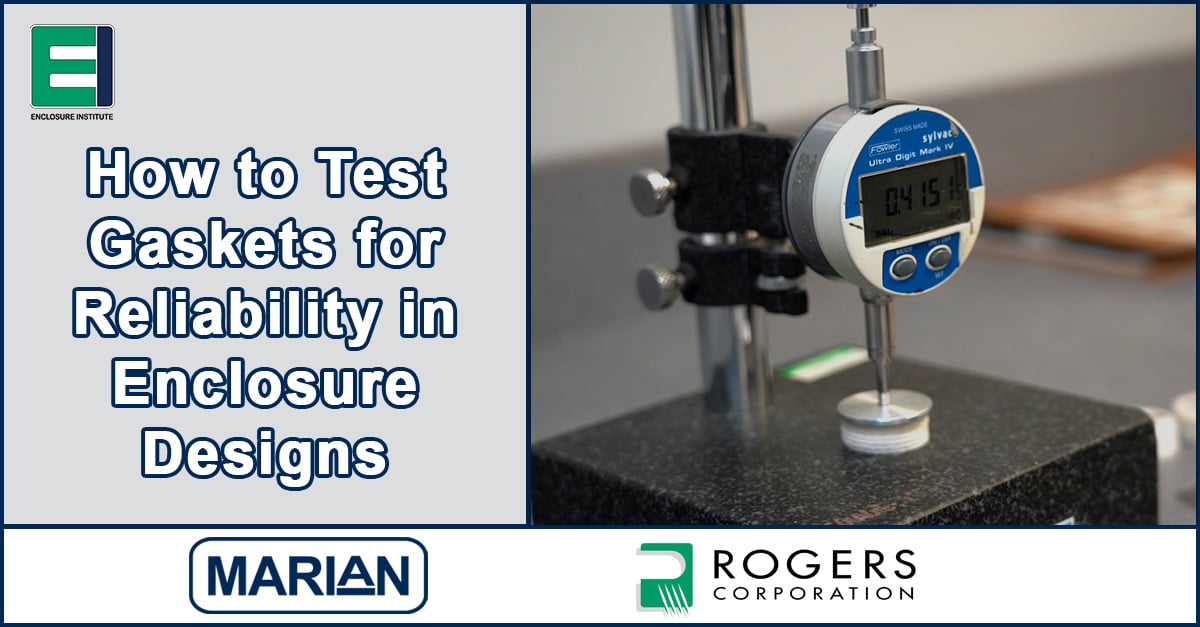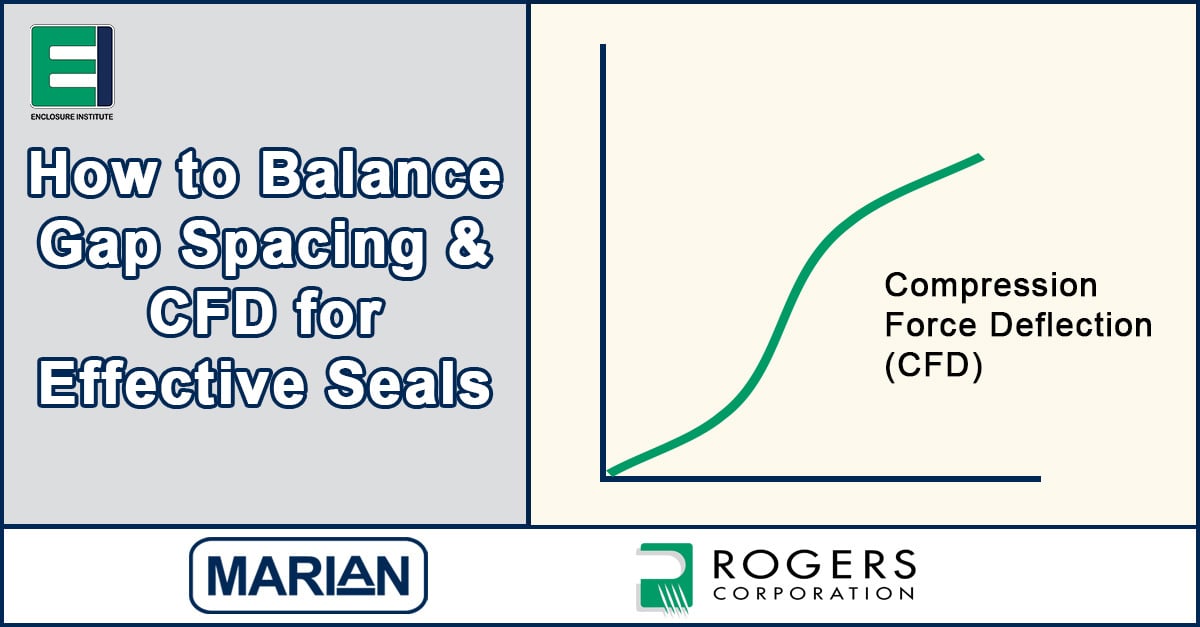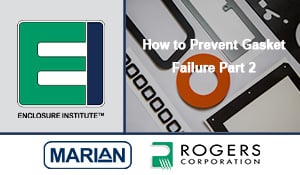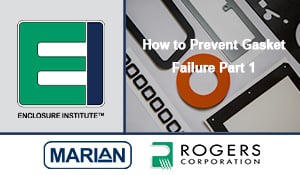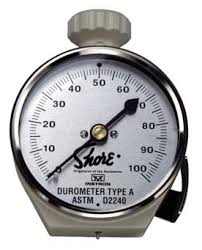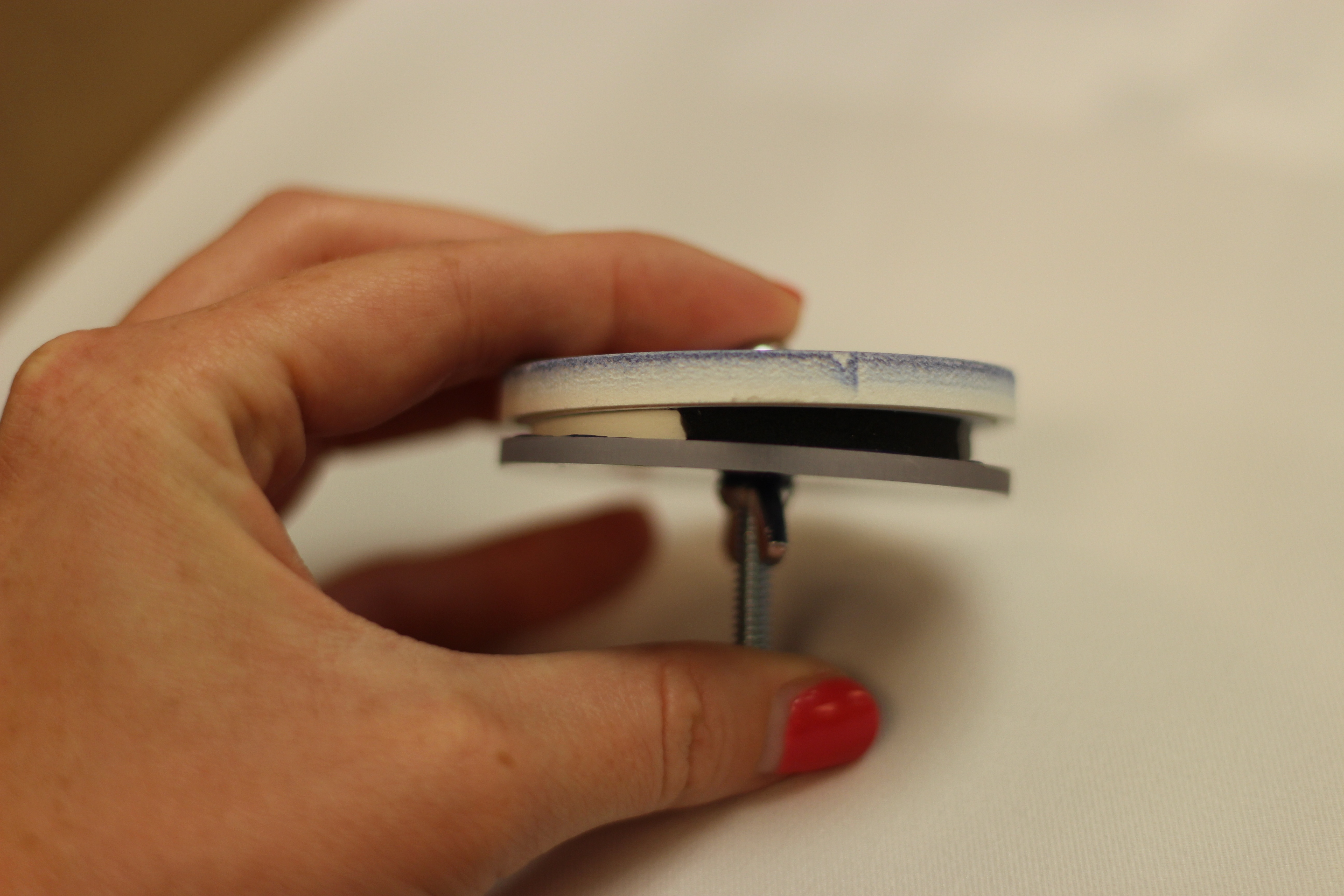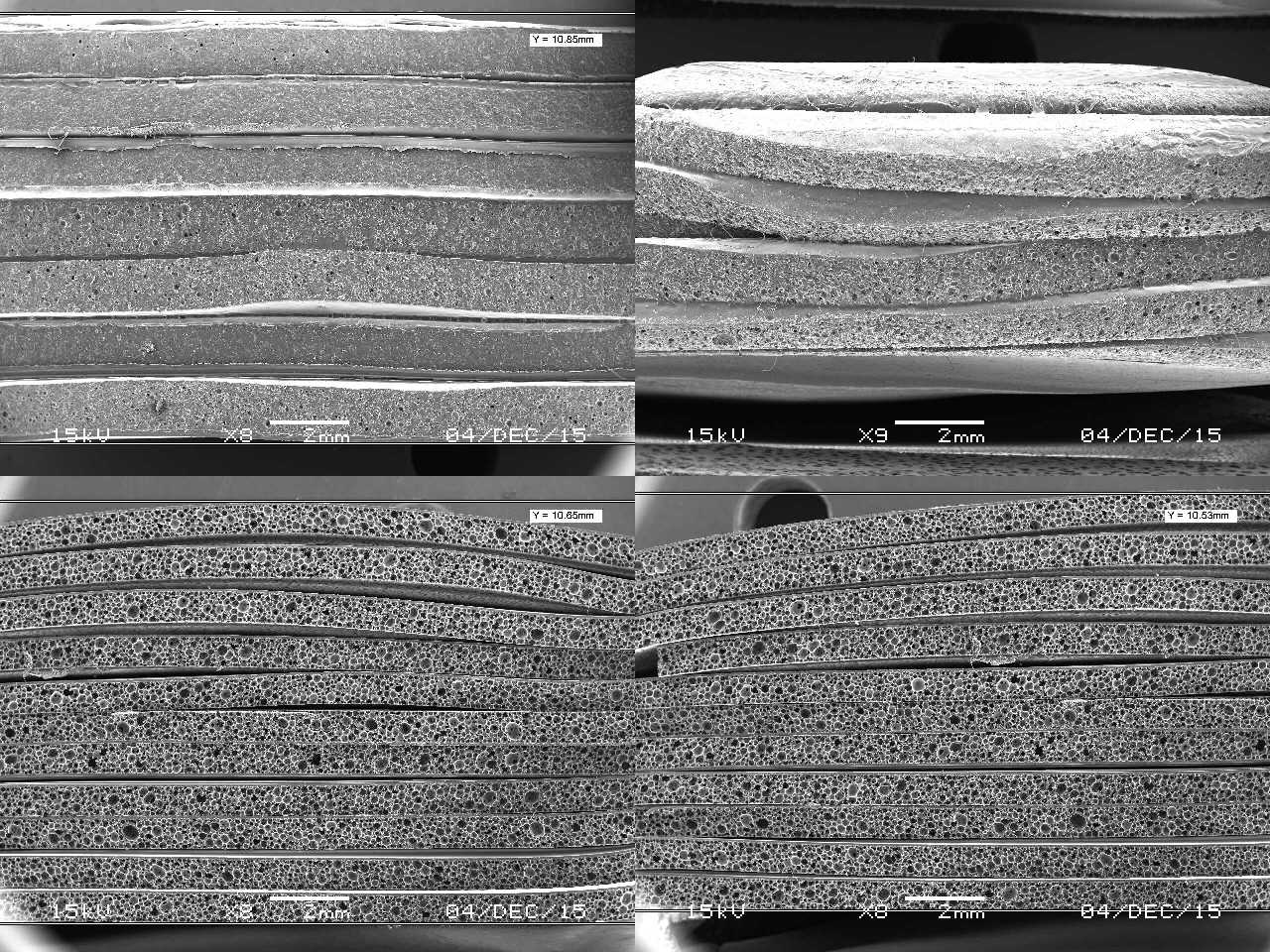A seal’s true value isn’t in how it looks on day one, but in whether it still protects your enclosure years later under heat, moisture, and mechanical stress. This Enclosure Institute™ article breaks down five core tests engineers can use to validate long-term gasket reliability: compression set, stress relaxation, thermal cycling, chemical resistance, and IP ingress protection.
Check out the extended blog on the Rogers website, How To Validate Enclosure Seal Reliability Through 5 Tests, and the video below.
*Disclaimer: The Enclosure Institute™ is a free educational resource created by Marian, Inc. and Rogers Corporation to help engineers navigate enclosure sealing with expert guidance.
Read More
Topics:
Foams,
IP Rating,
BISCO Silicone,
CFD,
PORON,
Compression Set,
Material selection,
Die Cutting,
Ingress Protection,
Gasket,
Enclosure Institute,
Seals,
Enclosures,
Rogers Corporation,
Material Testing
Designing a dependable enclosure seal isn’t just about picking or designing a gasket, it’s about how that gasket behaves under compression, for the planned life of the device (hours, weeks, months, days, years, etc.), within your hardware’s mechanical limits. The latest article from the Enclosure Institute™ highlights four key factors that matter most: gap spacing, compression force deflection (CFD), material compressibility, and gasket width.
Check out the extended blog on the Rogers website, The Mechanics of Enclosure Seal Design: Gap Spacing, CFD, and Compressibility, and the video below.
*Disclaimer: The Enclosure Institute™ is a free educational resource created by Marian, Inc. and Rogers Corporation to help engineers navigate enclosure sealing with expert guidance.
Read More
Topics:
Foams,
BISCO Silicone,
CFD,
PORON,
Material selection,
Die Cutting,
Gasket,
PSA,
Enclosure Institute,
Seals,
Enclosures,
Rogers Corporation
In Part 2 of our gasket failure series, we shift from the discussion on material science & environmental factors to mechanical design & real-world installation. Even a high-performance gasket can fail due to poor geometry, fastener placement, uneven compression, lack of venting, or improper gasket placement altogether.
Find the latest blog on the Rogers website, 6 Reasons Why Gaskets Fail: Design and Assembly, and the video below to start designing more reliable sealing components for your enclosure applications today.
Disclaimer: The Enclosure Institute™ is a free educational resource created by Marian, Inc. and Rogers Corporation to help engineers navigate enclosure sealing with expert guidance.
Read More
Topics:
Foams,
BISCO Silicone,
CFD,
PORON,
Compression Set,
Material selection,
Die Cutting,
Gasket,
Enclosure Institute,
Seals,
Enclosures,
Rogers Corporation,
Kiss-Cut,
Collapsible Gasket,
Multi-Piece Gasket,
Puzzle Gasket
Even the best-sealed enclosure can fail if the gasket material isn’t up to the challenge.
They say every failure is a step toward success, but we say that failure can be completely avoided by asking the right questions and having a clear understanding of your application's use case.
Lucky for you, we've condensed the important information we've learned over the years to help you make sure your enclosure is properly design right from the start. Check out the latest blog on the Rogers website, 6 Reasons Why Gaskets Fail: Materials and Environment, and the video below to start designing more reliable sealing components for your enclosure applications today.
Disclaimer: The Enclosure Institute™ is a free educational resource created by Marian, Inc. and Rogers Corporation to help engineers navigate enclosure sealing with expert guidance.
Read More
Topics:
Foams,
BISCO Silicone,
CFD,
PORON,
Compression Set,
Material selection,
Gasket,
Enclosure Institute,
Seals,
Enclosures,
Rogers Corporation
“If it doesn’t seal, it’s not really an enclosure.” This engineer-focused resource from the Enclosure Institute™, a collaboration between Rogers Corporation and Marian, Inc., highlights eight practical factors for designing effective, long-lasting gaskets and seals. You can read the full article on the Rogers website.
Disclaimer: The Enclosure Institute™ is a free educational resource created by Marian, Inc. and Rogers Corporation to help engineers navigate enclosure sealing with expert guidance.
Read More
Topics:
Foams,
IP Rating,
BISCO Silicone,
CFD,
PORON,
Ingress Protection,
Gasket,
Electronics,
Enclosure Institute,
Seals,
Enclosures,
Rogers Corporation
The Shore durometer (pictured right) is a scale for measuring the hardness of a material, such as rubber, plastic, thermal
plastics (TPE), and rigid plastics. The term "durometer" is often used to describe a material's rating on the scale, for example “this material has a durometer of 60.”
It's worth noting, there are a variety of durometer scales since elastomeric and plastic resins vary over a wider range than one scale can accommodate. Download our comparison chart to see how these scales overlap.
Durometer hardness is one of many physical properties considered when selecting a material for a specific application.
Beware of some common misconceptions. Durometer hardness is often inaccurately confused with the properties described below.
Read More
Topics:
Foams,
CFD,
PORON,
Elastomers,
Material selection
Marian has a brand-new demonstration piece to share with the world! Strategically named "Test My Memory," the demo illustrates the impact of compression cycling over time with 4 different foams. Neoprene, Polyethelyne, PORON Urethane, and BISCO Silicone are tested by being compressed for 48 hours.
Foam Material Compression
In the demonstration, you will see that certain foams depreciate as they take on impact over time, whereas other foams resist the compression set by returning to their original thickness. The material characteristic of being able to take a compression set, also called compression force defection, is extremely important in long-term sealing applications. The ability of the material to "push back" to fill in any potential gaps that would allow water or dust to pass through is critical. This makes such materials an excellent option for sealing gaskets. We wrote an entire blog post about compression force deflection, you can read it here: Compression Force Deflection in Foam Gaskets: A Critical Property
Read More
Topics:
Foams,
BISCO Silicone,
CFD,
PORON
Compression Force Deflection
Applications that experience periodic compression cycling over time may require a gasket that is capable of compression rebound. In the event that your application uses a material that does not resist compression force, the material may depreciate over time. When your gasket has dwindled or has deteriorated from all of the periodic compression cycling, your gasket will become ineffective and will need to be replaced. In a perfect world, your gasket should rebound to fill any potential gaps. Using a material with great compression resistance will guarantee a long-term sealing performance that will work just as effectively each time you reseal your application.
Read More
Topics:
Foams,
BISCO Silicone,
CFD,
PORON

